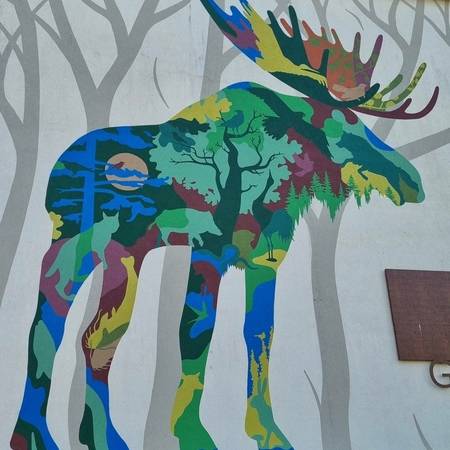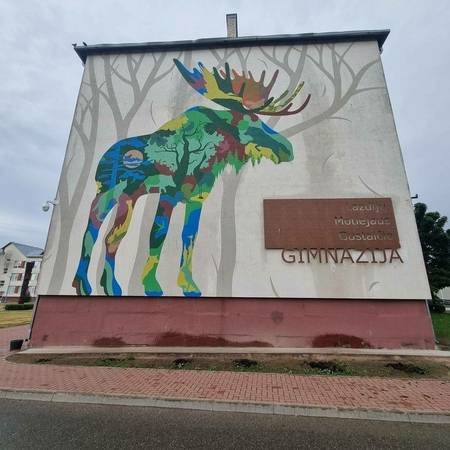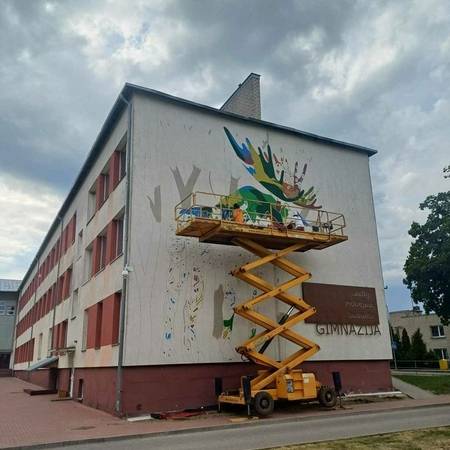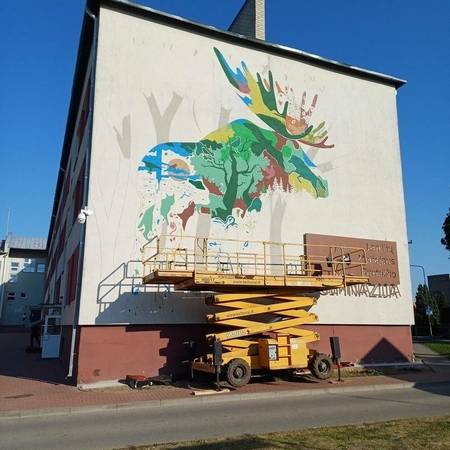KING OF THE FOREST - FOR BROTHERS OF THE FOREST is a neo-fresco designed to honor the partisans of Dainava district who fought and died for the independence of Lithuania. In the Lazdija region, the memory of the freedom fighters is cherished: there are many monuments, information stands and tables throughout the area, commemorations of important dates, themed hikes, and camps are organized.
The elk dedicated to the memory of the freedom fighters "settled" in a symbolic place - on the wall of the Lazdijas Motiejaus Gustaitis gymnasium. This school, established in 1920, was a witness to important historical events, many future "brothers of the forest" studied or worked there before the occupation. It was also completed by Adolfas Ramanauskas-Vanagas, commander of the armed forces of the Lithuanian Freedom Fighter Movement. Next to the gymnasium is the Lazdija Freedom Struggle Museum , famous for its engaging, interesting and modern exposition.
At the center of this piece of street art is the city's emblem animal, the moose, a symbol of strength and independence. Inside the elk silhouette we see a motley forest thicket, in which, if you look closely, the silhouettes of partisan nicknames are hidden. This reflects the hiding and survival of the freedom fighters in the forests of Lithuania. Guerrillas were as invisible as the birds and beasts of the forest, blending in with nature. They tried to survive at any cost, taking advantage of the opportunities provided by the forest. The ideas of constant vigilance, caution, struggle for survival and unity with nature, which reflect the everyday life of guerrillas and their indomitable spirit, are the axis of this work.
Many silhouettes of partisan nicknames are "hiding" in the drawing. You can read more about this neofresco here
"Live graphics" was painted on the wall, the author of the drawing and its idea is Ieva Vaivaraitė-Ošikienė.
The project was financed by the Lithuanian Culture Council, Lazdijai District Municipality.
The project was implemented by the Lazdijai cultural center.
We thank the Genocide and Resistance Research Center and the Lazdijai Region Museum for the consultations.




















Reviews